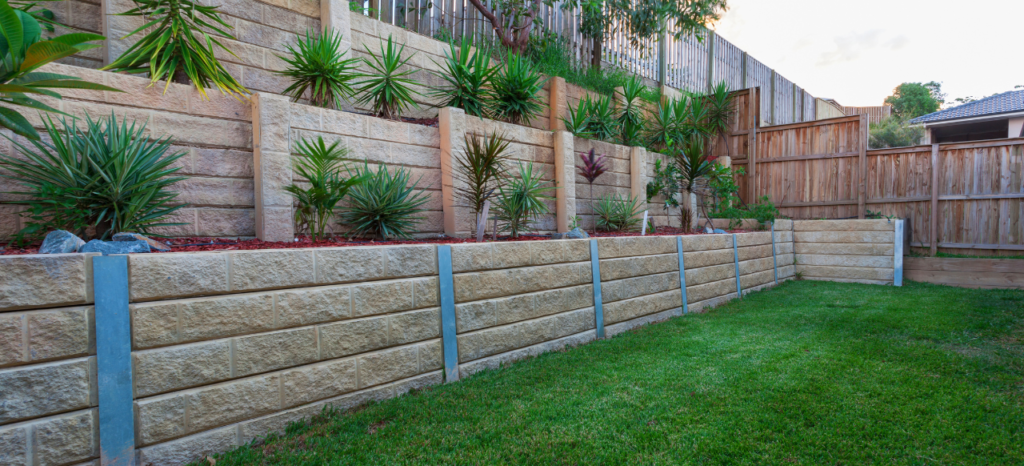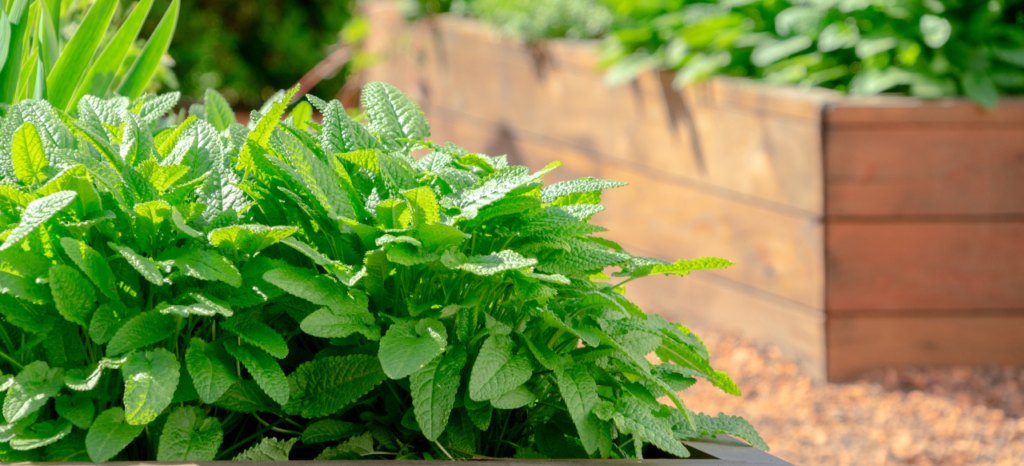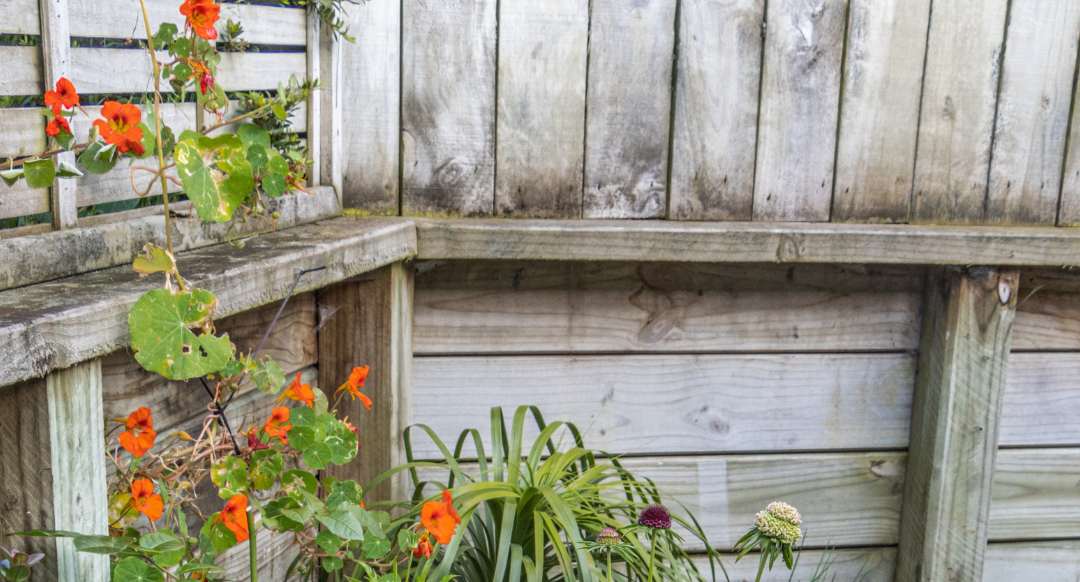Retaining walls are used to prevent soil erosion, create usable beds from steep terrain, aid in drainage and provide decorative or functional landscaping features. They may be independent structures or part of a larger construction work, such as a building or patio. There are several types of retaining walls, the most common we see in Ipswich are timber, and concrete sleeper retaining walls, in other areas you can find ones made of stone such as sandstone, and gabion baskets to name a few. This article will look at 5 main uses for retaining walls in residential properties.

Create usable, flat areas on sloping properties
Whether you’re looking to plant a garden bed or an outdoor entertainment area, retaining walls can help make sloped properties more usable by creating flat spaces for features like patios, seating areas, outdoor fireplaces, or even a pool. A more usable space results in the added value of a property in a monetary way improved aesthetics and increase the functionality of a property. They can also be used to create driveways or walkways and provide enough structural support to be able to support the weight of vehicles and soil. Given all these reasons, It is important to choose a material and construction method that will adequately support the load of the slope. If you are creating a boundary fence, there may be the requirement to have a retaining wall built first, to protect your investment and ultimately ensure that you fence lasts as it should. Keeping in mind that not all properties need retaining walls, and some may be a lot less extensive than others, ask your fencing contractor today to see what would suit your property and your needs.
Preventing erosion by containing soil
Erosion is a natural process that causes topsoil to be swept away from a site. This can occur due to wind, water, ground movement, or other forces. Retaining walls are often used as a means to control erosion on steep slopes. They’re also great for stabilizing an area to be able to build upon it, for example, a granny flat or a patio can be built on an area that is flat thanks to a retaining wall holding soil in place, with the assurance that the soil will not erode anytime soon.
Structural design reasons
Retaining walls are rigid structures that restrain soil to a slope it would not naturally keep to. They can be used for a variety of purposes, such as retaining soils for hillside farming, roadway construction, and land reclamation after a natural disaster. Retaining walls also protect your landscape from sinkholes, which can destroy structural members if water seeps into cracks. This is especially true in areas where floods are common
Retaining walls can be a great way to structurally change your property to be able, as mentioned above to utilise space effectively. This is especially helpful when you have a large property and want to use it for different purposes, for example, if you have a sloped property wherein you want to construct a second dwelling like a granny flat, a retaining wall can enable you to create this separate area. Very steep properties may use a series of retaining walls to build stepped garden areas that can be utilised because they are flat.

Assist with drainage
Retaining walls can assist drainage due to directing water to the optimal area. Retaining walls can help direct water flow away from your home, avoiding pooling and damaging flooding. This is especially important if the area you live in is on a slope and your property or home is at the bottom of that slope. Furthermore, when it comes to drainage within a retaining wall, it is one of the most important features that a retaining wall must have, therefore it is important that anyone who is designing and constructing your retaining wall, keeps drainage at the centre of their mind. Adequate drainage helps to keep the wall in the optimum position and prevents hydrostatic pressure from building up behind it. Typically, retaining walls will have drain holes or piping installed to redirect water away from the property. This will keep the wall itself from getting damaged or causing flooding which can be expensive to repair. During the construction process, your contractor needs to ensure that all possible water sources are taken into account. This includes a drainage assessment of the entire site before and after the retaining wall is constructed.

Add Value to Your Home
Retaining walls are a great investment for sloped properties, which will improve your property value and increase curb appeal. Not only will these features add aesthetics to your home, but they are also functional, allowing you to use your land more effectively. Increase usability, add structural support, improve drainage, and ultimately add value with a well build retaining wall, that you know will stand the rest of time. Whether you construct a timber fence on top of the wall or the wall in the feature of the garden, be sure to invest your resources wisely into materials and a contractor who will do the job properly to ensure the best long-term outcome.

